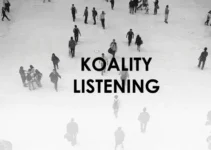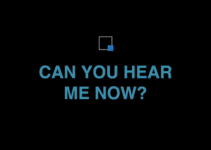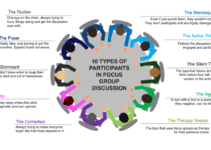Introduction
Hehe, after 2 years, I am finally writing on this website again. Apologies; I was lazy and feeling uninspired. Now, onwards. Let’s talk about the main topic, shall we?
If you are:
- A market researcher:
- If you are in charge of proposing the proper methodology to your client or your boss, this article is for you.
- If you are not in charge of proposing a suitable methodology, keep reading and try to share what you have learned here so you can score some brownie points with your boss or look good in front of your client. I got your back, brother.
- A university (PhD, Master, or Degree) student: Ask your professor or look up some guidance on Google Scholar or any research database available for your university and find similar studies. From what I observed, the market research approach to the qualitative method is casual and loose, so you may find the methodology here as a “bastardised” version without adhering to the theological or academic way of doing things.
There are a few things that you need to consider before you decide what qualitative method you want to use for your qualitative study.
- Research Objective: What does the client want to achieve? Does it require brainstorming? Do they want to understand the consumers as individuals or subgroups?
- Money / Investment: How much money do you think your client / your company would have? Some methods would require more investment than others.
- Nature of the research questions: Is it something generic? Or is it a taboo / sensitive topic you need to slap PG13 on it?
- The available resources: Do you have enough moderators? Are you transcribing yourself? Are there any clients observing?
Now, I will jump right into all the qualitative methodologies popular in the market research realm. I will use a lot of abbreviations because it’s cooler, and I am too lazy to write the whole thing. Grab a life jacket in case you feel like drowning.

Focus Group Discussion (FGD)
Popularity: High
Definition: A qualitative research method that involves a group of participants coming together for an in-depth, guided discussion on a specific topic or set of issues. The discussion aims to gather insights, perceptions, and opinions on the subject matter from a diverse set of participants. This method is often employed in market research, social science, and various fields to explore attitudes, beliefs, and experiences.
Number of participants: 2 – 10 maximum per session.
6 is ideal, 8 is pushing it, and 10 is just too much, but for some reason, some clients who take comfort in numerical logic still want it. Please advise your client that Qualitative is not about the number, but we are looking at the depth of information we can cover. With 10 participants, everyone would fight for airtime, and as a result, it will take a longer time (which will make your participants tired quickly), and we can just cover very superficial information from them.
How it is conducted: You need a moderator (like yours truly) and 2-10 respondents. The moderator would ask a set of questions (using the Discussion Guide).
Duration: 1 – 3 hours. 2 hours is the ideal (with a short break in between); 3 is the limit, you monster!
Setting: This can be done either online or face-to-face. Face-to-face is the best, hands down. Face-to-face setting usually requires additional investment, i.e., refreshments for the participants and venue rental.
When you should use this method:
- One of the key advantages of Focus group discussion is it is an ideal methodology when you want to encourage discussion, debate, ideation and building on each other’s feedback, understanding a certain subgroup (life-stage, racial profile, professional, etc.)
- If the nature of your study is concept or advertisement evaluation, usage and attitude for a new/existing product, seeking ideas and brainstorming on how to improve a particular process/product or find new opportunities, you should consider this option.
- Exploratory Study: In the early stages of research, when the goal is to explore new topics or generate ideas, FGDs are effective for identifying a range of opinions, attitudes, and experiences. They can help researchers gain insights into diverse perspectives on a given topic.
- Complex Issue: When the research involves complex or multifaceted issues, this method allows participants to interact and discuss complex topics, helping researchers understand the depth of opinions and the nuances surrounding the problems.
- Understanding Social Norms: When studying social norms, group behaviours, or cultural influences, FGDs provide a platform to observe group interactions, social influences, and collective behaviours. They help explore shared beliefs and values.
- New/Existing Product Development or Pilot Testing: When developing new products or services, FGDs can help gather insights into consumer preferences, expectations, and perceptions. Group discussions allow participants to build on each other’s ideas, leading to richer feedback.
- Since FGD would host at least 2-10 people, the pressure on the participants is generally lower. That means the moderator’s attention would not be laser beam focused on one participant; they can take a breather, and someone else would carry out the conversation, recharge and re-join the conversation. If you would like to know how to manage the dynamics within FGD, I suggest you check out this fantastic article.
- Since it is a typical group conversation, when participants want to recall their experiences, recollections, or ideas, they can build on each other’s ideas. The group setting would trigger their memories and ideas for better insight.
When you should not use this method:
- Sensitive or stigmatized topic: when the discussion is personal/private in nature. This includes medical conditions, religious practices, financial capabilities, highly sensitive political studies, etc. Like urm, understanding the patients’ POV for a new erectile dysfunction medicine (some men would rather get a beating than admit they have this problem openly) and the importance of the Halal logo on a shampoo bottle (if you ask a group of Muslims, the majority would say yes because they want you to think that they are better Muslims and don’t want you or other penguins to judge them).
- Difficult target: If the participant is a millionaire, or a bricklayer with a five-digit income
or a minister with a low IQ but holds a high position in the Malaysian government.If you think the participant would be challenging to recruit, consider conducting individual interviews. - If you have time constraints, FGDs may not be the most efficient method, as they require scheduling and facilitation.
- If you have no expertise: Without a skilled moderator, discussions might be dominated by some participants or skill to ask the questions in a more participant-friendly language, hindering the exploration of diverse perspectives. Alternatively, you can hire me (shameless plug, I know, but who cares, this is my website, and I can do what I want with it). You would also need resources to analyse the findings and transcribe your data; FGDs may generate large amounts of data that are challenging to manage.
- Need for Numbers: If your client is more interested in numbers, just run a quantitative survey instead.

In-Depth Interview (IDI)
Popularity: High
Definition: An in-depth interview is a qualitative research method involving detailed, one-on-one interviews with participants to gather comprehensive insights into their experiences, perspectives, and attitudes. Unlike structured surveys that rely on standardised questions with fixed response options, in-depth interviews are more open-ended and allow a deeper exploration of the participant’s thoughts and feelings on a particular subject.
Number of participants: 1 per session.
How it is conducted: You need a moderator and 1 respondent. The moderator would ask a set of questions (using the Discussion Guide). The participant is always 1 person, but you may co-moderate or have your client tag along and ask questions.
Duration: 30 minutes to 2 hours. 2 hours is the maximum. Don’t be a retard and try to propose 3 hours. Nobody would want to talk to you longer than that; if they did, they are not the person you want to spend time with.
Setting: This can be done either online or face-to-face. Both are okay, though my personal preference is to do it face-to-face. If you are doing it face-to-face, you can interview the respondent’s at his/her house/office, a nearby and quiet coffee shop, or rent a venue so you don’t get any disturbance.
When you should use this method:
- One-on-One Interaction: In-depth interviews are an ideal and conducive methodology for sensitive and intimate subjects/personal categories, like money management, opinions about political backlash, UI/UX on how a consumer uses your application, etc. If the topic being discussed is sensitive or personal, individuals may feel more comfortable expressing their thoughts and experiences in a private, one-on-one setting.
- Allows for more personalised feedback. Respondents will be more comfortable expressing their opinions and thoughts on a particular idea/topic, allowing for a deeper and richer understanding of the individual’s perspective. This also prevents influencing others if it is done in a group setting instead. Researchers can also tailor questions based on each participant’s responses during individual interviews, allowing for personalised probing and a deeper understanding of their perspectives.
- Time-pressed individuals (e.g. B2B, government officials, etc.). Like the proverb, if the mountain won’t come to Muhammad, Muhammad must go to the mountain.
- Highly opinionated individuals like your opinion leaders, experts, etc., would be ideal so that you can explore more in-depth.
When you should not use this method:
- Need Group Dynamics: if the research objective is to brainstorm and explore group dynamics and shared experiences or explore cultural norms and practices, then FGDs could provide richer insights.
- Limited resources: if your client is dirt poor, or if you conduct the research out of your own pocket money (RESPECT MAN), and if your study involves a large and diverse sample, running IDIs would be financially seppuku and time-consuming. Other methods, like quantitative surveys or FGDs, might be more practical in such cases.
- Hyper-Sensitive Topic: In situations where participants might be hesitant to share sensitive or socially undesirable information, even on one-on-one interaction, you may need to consider a more anonymous method – like an online IDI with no video or online surveys to yield more honest responses.
- Limited Time: Surveys or other quantitative methods could be more efficient if you need rapid data collection from many participants.
- Low-Quality Respondent: If you recruit a terrible respondent, you will immediately know and regret it. You have no backup, and you can only hope the next one will be better. Unlike FGD, other participants can carry the conversation. But in a bad IDI, even Noah’s ark could not carry that animal.

Ethnographic Interview
Popularity: High
Definition: It is a qualitative research method employed in ethnography that studies people and cultures in their natural environment/habitat, i.e., their home, their office, their car—you get my drift. Unlike traditional IDIs that may be conducted in a controlled setting, ethnographic interviews aim to understand a community or group’s cultural context and practices by immersing us, the researcher, in their everyday lives.
Alternative names: Shop Along Interview, Drive Along Interview, Home Visits, Immersion Session, etc. You can call it whatever, but if observation is a key part of the study, then it is an ethnographic interview.
Number of participants: 1-5 per session.
1-2 participants is ideal. But it could go up to 8 participants. For instance, if you get an assignment like “How would a suburban mother with more than 3 kids cook their breakfast at home?”. So, you would observe the mother and her interaction with the five kids and her husband. In the event that you need to observe more than 2 participants, get another researcher to tag along with you.
How it is conducted: You need a lead moderator, a helper (if more than 2 respondents) and the participant(s). There is no fixed method on how to conduct an ethnography study, but I usually would break it down into 3 main components:
- Introduction: This should cover the ice-breaking and setting up context, and we inform our participants that we will tag along and observe them.
- Observation: Then we let our participants do things we want to observe, i.e., cooking for the kids, driving around in their neighbourhood in their new car, or running their workshop like usual.
- Recap & Closing: After a set period, we ask them to sit down and retrace the steps. “Oh, I noticed you did this and that. Why is that so? What are you hoping to get?” etc. This is when we investigate their behaviour based on our observations.
Duration: 1–6 hours. 2 hours is typical. Anything longer than 6 is possible, but soul-sucking. I once did 6 hours of ethnography interview to observe Malaysian mothers’ behaviour during breakfast and how cereal can potentially play a role (don’t eat them or feed it to your kids; it is a shitty product and should be avoided like the plague it is)
Setting: This can be done either online or face-to-face. Face-to-face reigns supreme, with online barely scratching the surface. Online ethnographic tools are usually awkward, not natural, and too “homework”. I would avoid it if possible.
When you should use this method:
- Observation: If participant observation is a crucial aspect of your research design, where the researcher immerses themselves in the setting to understand its dynamics better.
- Rich Cultural/Contextual Understanding: When your research aims to deeply understand and explore a particular group’s cultural practices, norms, and behaviours within their natural context. It allows you to observe and understand their actions in real-life situations.
- Holistic Perspective: When seeking a holistic perspective on the social dynamics, relationships, and interactions that you know you cannot fully capture in a survey of FGDs or IDIs, i.e., the pros and cons of a new Tesla driving experience. If you are in the Tesla with the participant, you can feel it, and you will be able to write better reports since you are immersed in it.
- Uncover the Unknown: Ethnographic interviews also effectively uncover practices, beliefs, or behaviours that participants might not be consciously aware of or express in more formal settings.
When you should not use this method:
- Unskilled Moderator + Bad Respondent: You would know immediately if you have a terrible participant. If you are not a skilled moderator, an ethnographic interview is one of the hardest to pull off since you need to thread the water carefully, know when to interrupt and capture all the nuances.
- Observer Effect: In physics, the observer effect is the disturbance of an observed system by the act of observation. Your respondent would suddenly read all the labels when you observe them in a shopping mall; the mother kisses all their kids, her husband, the gardener and the entire neighbourhood during observation. Without a proper technique, the participants would act unnaturally, give you data that would be inaccurate, and lead them nowhere, or maybe towards the land of headaches called Panadolia.
- When Your Client is Overtly Excited: If the client tells you that 10 people from their team would like to observe the session, politely tell them that you forgot the world revolves around them and apologise for being silly. 10 people? That’s an invasion even Putin would give you a heads up. Please bring a maximum of 2 observers. We don’t want to make the participant anxious and uncomfortable.
- Short Timeframes and Your Client is Poor: It is a time-intensive method. Conducting ethnography effectively requires resources for extended fieldwork, travel, and participant observation. If you have limited budgetary or personnel resources, alternative approaches might be more feasible.
- Scope of the Research Question: If your research question is narrowly focused and requires specific, targeted data, ethnography might provide more information than needed. So, you may end up with more information than what you really need and spend all that money for nothing.
- Lack of Access: Getting participants for this method could be tricky. Would a minister allow you to shadow them for 3 hours in their office? Or would a millionaire invite you to their house and show you their bedroom? Of course not, unless you blackmail them.

Workshop
Popularity: Medium-High
Definition: It is an interactive and collaborative event that brings together consumers, influencers, KOLs, or end-users of a product or service to share their insights, preferences, and experiences with the agency/client. The primary goal of a consumer workshop is to gather qualitative data directly from the target audience to inform product development, marketing strategies, or improvements to existing offerings.
Number of participants: 6 – 50 per session. It depends on the budget and the type of audience. I would not advise a typical consumer to participate in a workshop. Usually, the participants are as follows:
- Highly articulated Consumers: Market Research agencies call them Super Consumer (I know, such a lame-ass label) or KOC (Key Opinion Consumer – whatever that means). You really want highly articulate consumers who know about your product/service/industry.
- Senior Management / Decision Makers from the Client Side: You would want them to participate, too. These are the product/service owners, so they are valuable in the workshop since they know the ins and outs of their company/product/marketing, etc.
- Facilitators and Moderators: Depending on your sample size, you may need 1 facilitator for 8 participants. So, if you plan to host 30 consumers plus 18 participants, you would need 48/8 = 8 facilitators/moderators to ensure it runs smoothly.
How it is conducted: These workshops often involve a series of activities, discussions, and exercises designed to elicit valuable feedback and create a collaborative environment. Simply put, it is structured discussions and feedback sessions that allow consumers to express their thoughts on various aspects, such as product design, features, usability, or overall satisfaction. Workshops may include hands-on activities that involve product testing, UX testing, prototype evaluation, or other interactive exercises to gather real-time feedback.
Duration: 2 hours–8 hours. With breaks and energising exercises in between. Anyone who suggests a focused discussion for over 2 hours without a break should be shot twice. If he has a beard, set his beard alight and watch him slap himself to death.
Setting: This also can be face-to-face or online.
You would need the entire venue, like a hotel ballroom, to accommodate the participants, their big brains, and their fragile egos. Teehee.
When you should use this method:
- Idea Generation: When introducing new ideas or refining them, concepts, or prototypes, you want direct feedback and input from the target audience. Or when you want to involve consumers/participants in the co-creation process, allowing them to contribute ideas, suggestions, and insights for product innovation/process improvement, etc.
- Evaluation of Products/Ideas/Prototypes: To understand the user experience (UX), identify pain points, challenges, or areas of improvement of a product, service or marketing strategies, especially if it involves hands-on interaction, testing, or exploration.
- Real-Time Interaction and Collaboration: The collaboration would encourage participant to share their thoughts, ideas and experiences, and you can observe real-time interaction and reactions. The process is iterative, with opportunities for continuous refinement based on consumer feedback.
- Good Optics: To strengthen the client’s image with customers, influencers, and employees by actively involving them in the development process, demonstrating that their opinions matter. For instance, if you hold a workshop for Citibank employees to improve their working conditions, even if the management decides to lay off more people in the next few months while giving themselves a hefty bonus despite not making any profit, why not?
When you should not use this method:
- Cost Constraint, Labour Intensive and Time-Consuming: This method is expensive. You need a crazy amount of resources, investment, planning and execution to pull this off.
- Large Geographical Spread: Organising a physical workshop might be logistically challenging when your target audience is geographically dispersed. Consider online alternatives or other research methods that accommodate remote participation. There are some resources online that can tap into online communities/panels that consist of professionals around the world. I’ve never used them, but I hear they are more expensive than feeding 10 families.
- Security or Confidentiality Concerns: If your research involves proprietary information or confidential data, or if participants are uncomfortable discussing certain aspects openly, individual interviews with strict confidentiality measures might be more appropriate. After all, can you trust an influencer with your next big product innovation? I certainly wouldn’t.
- Limited Facilitation Resources: With limited resources for skilled facilitation or moderation, workshops may not yield the desired results.

Online Blog / Bulletin
Popularity: Medium-Low
Definition: A qualitative online bulletin is a virtual platform or forum for text-based discussions, just like the old forum, among participants as part of qualitative research. It’s a method of gathering qualitative data through online interactions where participants contribute their thoughts, experiences, and opinions over an extended period of time. Like a typical forum, it allows participants to respond conveniently, from their house or anywhere, at any time.
Number of participants: 20–100 participants.
How it is conducted: It is usually hosted on a site/forum where both moderator(s) and participants would register, log in, and communicate on the forum. The question would be posted on the forum at a specific time automatically, and once it got published, the respondents would answer, and the moderator would read and probe if necessary. If the participant is not answering/responding, another team will send a daily reminder for them to log in.
Duration: 5 days to 1 month.
Yes, it is that long.
When you should use this method:
- Geographical Diversity: Suppose your client wants to evaluate one of the advertisements they want to release globally, and we need to recruit participants from around the world; the online bulletin is the answer.
- Flexibility: Participants have varying schedules, making it challenging to coordinate real-time sessions. An asynchronous format allows them to contribute at their convenience. But remember that the Moderator must be online most of the time to ensure you can catch them right in the moment.
- Sensitive Topic: The nature of the research involves discussing sensitive or personal topics where participants might feel more comfortable expressing themselves in a written, anonymous format.
- Documented Interaction: You don’t have to provide a transcript since everything is recorded.
When you should not use this method:
- Inorganic and Superficial: The asynchronous nature of an online bulletin board doesn’t facilitate real-time interactions, so you would feel like you are better off reading Reddit posts. Most respondents would only log in to answer the main questions and often conveniently forget to reply to your probing questions. There is no room for discussion. You may as well send them multiple open-ended surveys. It is so dull and not fulfilling. I hate this methodology with a strong passion.
- Frequent Technical Issue: The target audience lacks internet access or is uncomfortable using online platforms, making participation challenging. Most of the time, the moderator acts like the IT helpdesk. Did I tell you I hate this method? They should just let it die during COVID, man.
- Expensive: Do you think it is cheap? Think again. The online bulletin platforms that I had the (what’s the opposite of pleasure) to work with are all costly despite their poor navigation, UIUX and god-forsaking design. If you want this method, I suggest you create a group page on Facebook and do it there. Play around with the privacy setting so you can protect it from outsiders. It is not worth it, seriously.
- One-Liner Feedback and Poor Writing Skills: The participants may not be comfortable expressing themselves in writing, and an oral discussion format might be more appropriate. “How would you describe your favourite coffee taste? Please be elaborate and be as detailed as you can.” And the fella just answered, “Tasty”. To whoever gave me the one-liner answer before, I hope your family gets carried away by ants.
- Limited Depth of Exploration: You’ll get superficial, less detailed, or nuanced responses. You might as well ask chatGPT, which is not as torturous as this. Overall, this is a method that I would not recommend at all.

Isolate Group
Popularity: Low
Definition: This mixed methodology combines FGD + IDI in one session. Isolate groups combine the best of classic focus groups (free flow of debate, interchanges, and ideas) with the individual and detailed diagnostics of in-depth interviews.
Number of participants: 4-6. Similar to FGDs.
How it is conducted:
You would need 2 moderators ideally and 2 rooms. Let’s call these 2 moderators Benson and Hedges and these 2 rooms Room Tifa and Room Aerith; for example, we have 4 participants.
- Starts: Benson and Hedges welcome the 4 participants and do the introduction + discussion in Room Tifa.
- Middle:
- Hedges would call a participant to Room Aerith and conduct the IDI there.
- Benson would conduct the group with the remaining 3 participants in Room Tifa.
- Hedges would send the participant and call another one to Room Aerith.
- And so on.
- End: Benson and Hedges do the outro in Room Tifa with all 4 participants.
Duration: Same; it could be 1.5 hours to 2.5 hours.
When you should use this method:
- Reduces the impact of group-level biases and, at the same time, capitalises on the group dynamics and ensures stimulation and building of ideas and thoughts.
- Sensitive/Stigmatized Topic: For example, you have a concept on whitening deodorant. But you assume male consumers would not admit openly that they desired smooth and fair armpits, so you separate them and ask individually. Once you have captured all the individual responses, you can discuss them in the group.
When you should not use this method:
- When there is no need for it, duh.
- This group is more expensive; double the resources and venue booking.

Talk Show
Popularity: Low
Definition: A talk show, in a research context, involves a structured conversation or discussion format used to gather insights, opinions, and experiences from participants in a talk-show format. Like Conan, Graham Norton, or Craig Ferguson. This approach incorporates the elements of a traditional talk show, such as interviews, discussions, and audience interaction, to explore qualitative research questions.
Number of participants: 1-4 participants, 5–30 guests, observers, clients, or agencies.
How it is conducted: Like a talk show, you would have your host (moderator) and the participants on an elevated platform, and the audience would face said platform. Pretty standard stuff. Except there would be no laughing track.
Duration: 1-2 hours.
When you should use this method:
- Celebrity/KOLs/Influencer/Minister: Remember those elusive types of participants? These are the people who crave attention, and they revel in the spotlight. When they have an audience, they will sing their heart out. Do whatever you want with that information.
- Real-Time Interaction: A talk show format is suitable if you/your client value real-time interaction and immediate feedback. It facilitates spontaneous responses and discussions that can uncover unexpected insights.
- Opportunity for Networking: It depends on your client’s objective. A talk show would be best if the study aims to engage in influencer marketing, find a new spokesperson for a brand, etc. Or if your client wants to rub shoulders with the ministry in charge, this is a perfect opportunity for them to mingle and take comfort in knowing you made it happen.
When you should not use this method:
- Resources Limitation: It is generally more expensive; you need an entire venue to host 20-30 people, a more troublesome setup, etc.
- Safe Topic: You must tailor the discussion guide to be politically correct and suitable for a wider audience. That means you cannot ask about sensitive topics/sensational information. Otherwise, your audience would feel ambushed, and there’s another drama (or lawyer’s letter coming your way). The minister may be stupid, but they don’t like publicly showing it.
Ending
If there’s any methodology you want me to cover, just comment down below. I hope it will provide some ideas and talking points for the next time you want to talk to your client.
Arigatho yo for reading (since I’m a weeb I had to make it cringe)






Very interesting topic. I am a university student and need to interview 50 people for my thesis. I considered an in-depth interview as my methodology until I saw your post. My question is two-prong:
1 – how different the talking points for in-depth interview vs focus group?
2- can it be done online?
Thank you for taking the time to write this.
Hey Nadezda,
Cheers. I recommend you check with your professor before you change the methodology. If you do it independently, N=50 sample can be daunting for data collection and analysis. That said:
1- Almost the same. It depends on your key objectives or the information you want to uncover from the study. In a focus group, however, you can ask the participants as a group, rather than individual. You can get the group consensus and then probe them individually if required.
2 – If you are talking about conducting FGD (or even IDI) online, then yes. I wrote about it here: https://qualabear.com/how-to-moderate-online-focus-groups/. Hope you find it useful.
Stay safe and good luck!
Thank you soo much! Have you thought about having subscribers, too?
Haha no problem. Maybe in the near future. I am still experimenting and learning how to code.